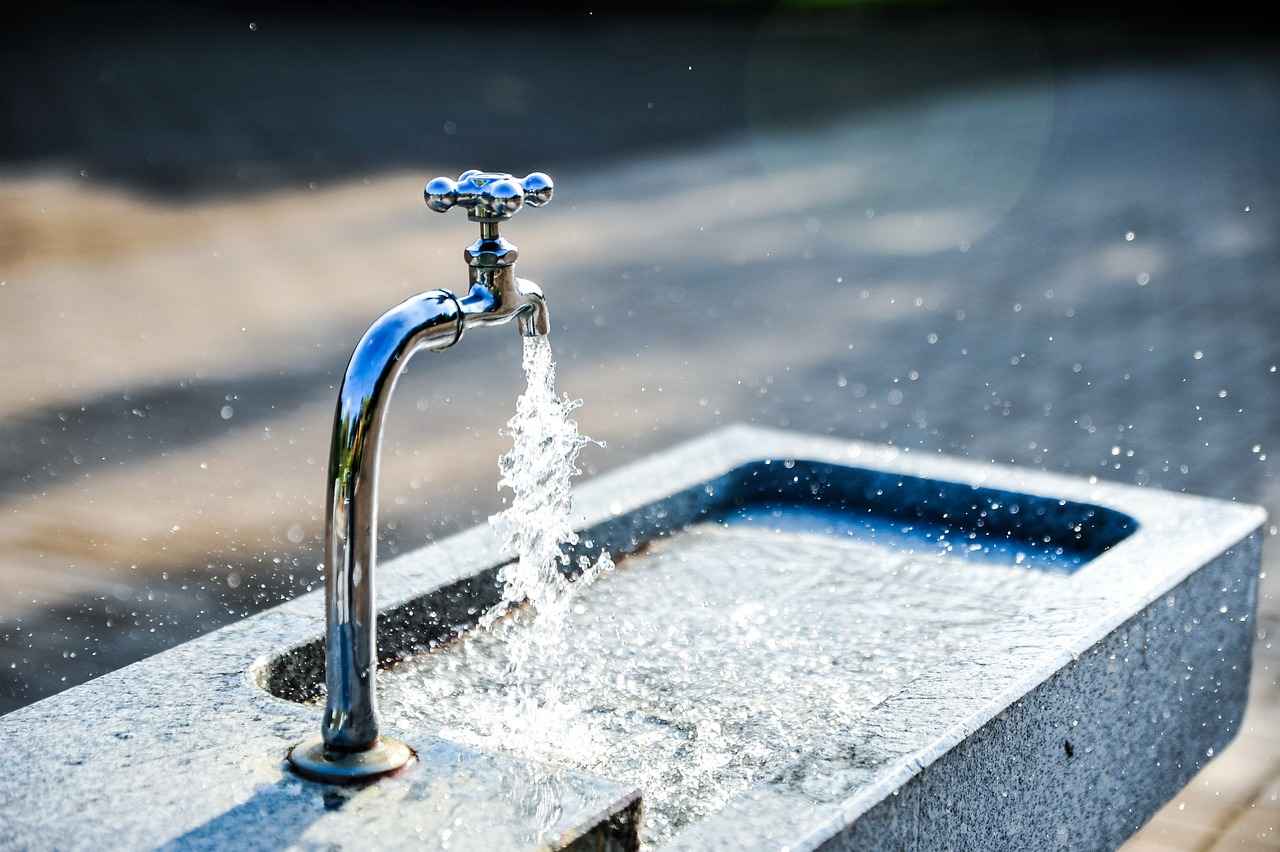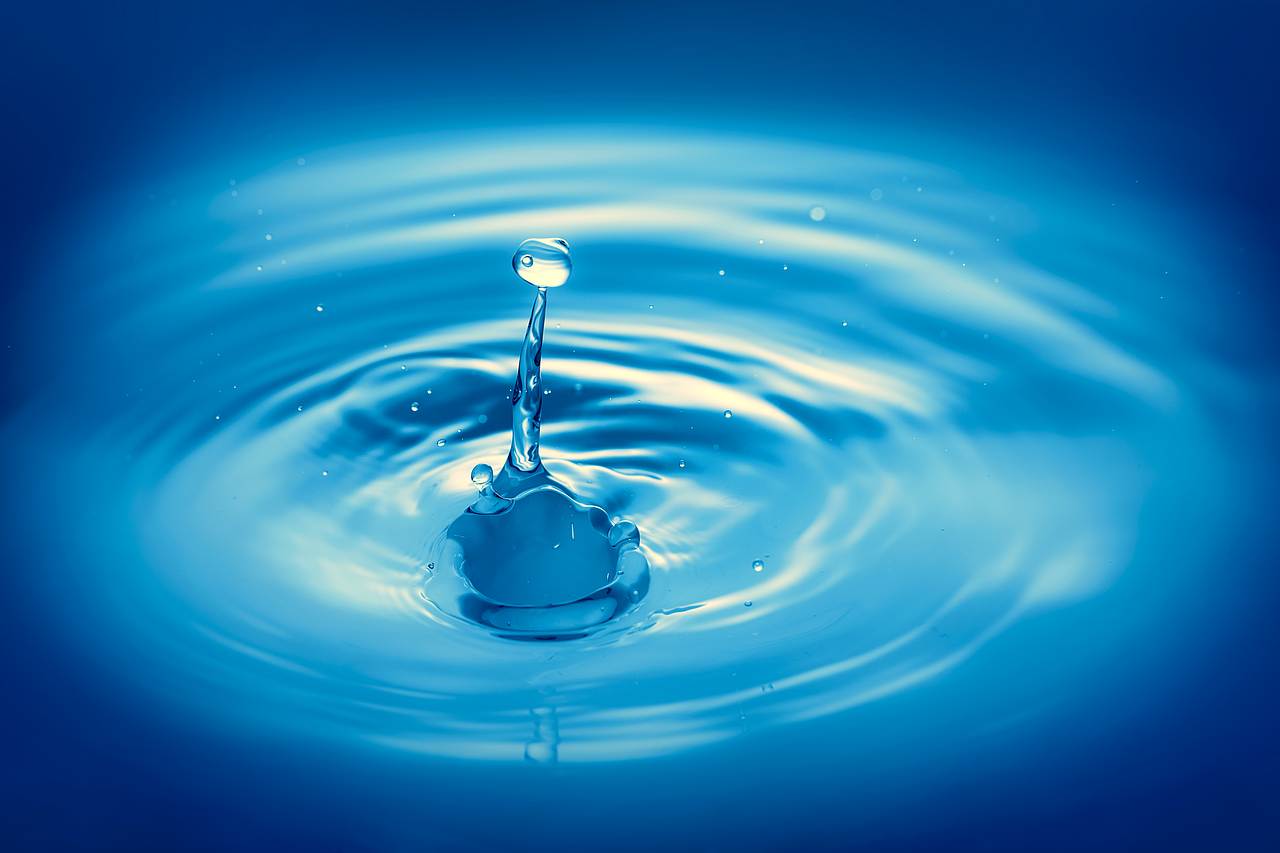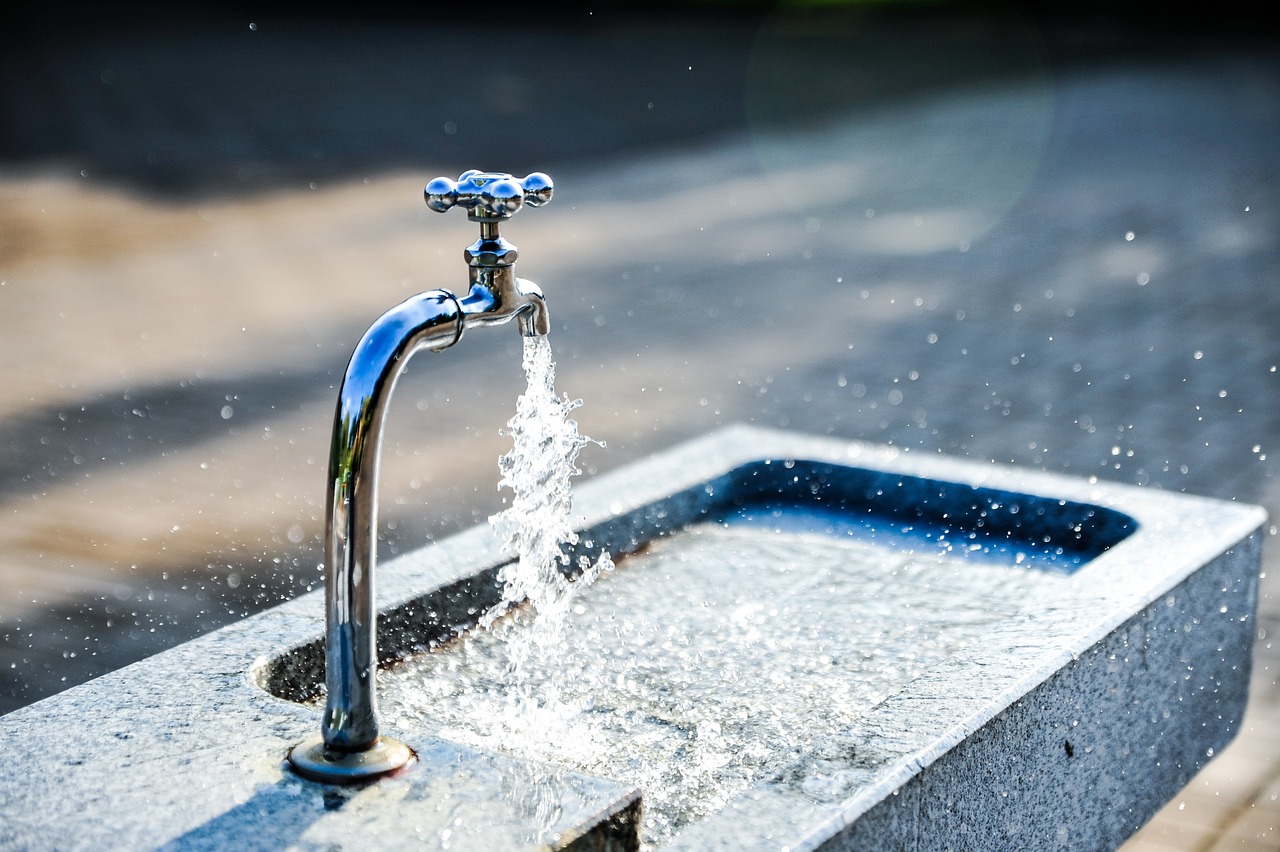Hot water is an essential comfort in modern homes, yet many homeowners face the frustrating issue of it running out too quickly. This article delves into the reasons behind the rapid depletion of hot water and offers practical solutions to ensure a consistent supply, enhancing both comfort and efficiency in your household.
Understanding Your Water Heater
To tackle hot water issues effectively, it is crucial to understand how water heaters function. There are several types of water heaters, including tankless, traditional tank, and heat pump models. Each type operates differently, and knowing the specifics can help diagnose potential problems.
Common Reasons for Hot Water Shortages
- High Demand for Hot Water: During peak usage times, such as mornings or evenings, the demand for hot water can exceed the supply. Understanding your household’s hot water habits can help in managing this demand.
- Family Size and Hot Water Needs: Larger families naturally require more hot water. If your current system is unable to meet these needs, it may be time to consider upgrading to a larger capacity heater.
- Concurrent Usage of Hot Water: Using multiple hot water sources simultaneously, such as showers and washing machines, can quickly deplete the supply. Scheduling these activities can help mitigate this issue.
Water Heater Capacity Issues
If your water heater is undersized for your household needs, it will struggle to keep up with demand. Assessing your hot water usage can help determine if you need a larger capacity heater.
Water Heater Malfunctions
Malfunctions within the water heater can significantly affect its performance. Common issues include:
- Thermostat Problems: A malfunctioning thermostat can prevent the water heater from reaching the desired temperature. Regular checks can ensure optimal performance.
- Heating Element Failures: In electric water heaters, a broken heating element can lead to insufficient heating. Knowing how to test and replace these elements can restore functionality.
Water Quality and Its Impact
The quality of your water can also affect your heater’s efficiency. For instance, hard water can lead to mineral buildup, impacting performance.
- Effects of Hard Water: Hard water can cause sediment to accumulate in the tank, reducing heating efficiency. Regular flushing of the tank can help maintain optimal performance.
- Water Softening Solutions: Installing a water softener can minimize mineral buildup and prolong the life of your water heater, ensuring a consistent supply of hot water.
Upgrading Your Water Heater
If you continue to experience issues, it may be time to consider upgrading your water heater. Understanding the latest models can provide better efficiency and capacity.
- Choosing the Right Size: Selecting the appropriate size for your water heater is crucial. A professional assessment can help determine the right capacity for your needs.
- Energy-Efficient Models: Investing in energy-efficient models can lead to significant savings while ensuring a reliable supply of hot water.
Regular Maintenance Tips
Implementing a maintenance routine can prevent hot water shortages and extend the life of your water heater. Simple checks can make a substantial difference:
- Flushing the Tank: Regularly flushing the tank removes sediment buildup, enhancing efficiency.
- Inspecting Anode Rods: Checking and replacing anode rods can prevent corrosion and improve the longevity of your heater.
By understanding the factors that contribute to hot water shortages and implementing these solutions, you can enjoy a steady supply of hot water, enhancing your comfort and efficiency at home.

Understanding Your Water Heater
Understanding your water heater is crucial for maintaining a consistent supply of hot water in your home. Water heaters are essential appliances that provide hot water for various domestic needs, from showers to laundry. This section will offer a detailed overview of how these systems function, the different types available, and their significance in diagnosing hot water issues.
How Water Heaters Work
Water heaters operate by heating water and storing it for use. The process begins when cold water enters the tank through a dip tube. A heating element, either gas or electric, warms the water to the desired temperature. Once heated, the hot water rises to the top of the tank, ready for use. When a hot water tap is opened, the cold water flows in, pushing the hot water out.
Types of Water Heaters
- Storage Tank Water Heaters: These are the most common type, featuring an insulated tank that holds a specific amount of hot water. They are available in various sizes, typically ranging from 20 to 80 gallons.
- Tankless Water Heaters: Also known as on-demand water heaters, these units heat water directly without the need for a storage tank. They provide a continuous supply of hot water, making them energy-efficient for smaller households.
- Heat Pump Water Heaters: These units use electricity to move heat from the air or ground to heat water. They are highly efficient and can significantly reduce energy costs.
- Solar Water Heaters: Utilizing solar panels, these systems harness sunlight to heat water. While they require an initial investment, they can lead to substantial savings on energy bills over time.
Importance of Understanding Your Water Heater
Recognizing the type of water heater you have and how it operates is essential for troubleshooting hot water issues. For instance, if you experience a shortage of hot water, knowing whether you have a tank or tankless system can help determine the cause. Common problems may include:
- Inadequate heating due to a malfunctioning heating element or thermostat.
- Insufficient tank size for your household needs, leading to quick depletion of hot water.
- Mineral buildup from hard water that can affect heating efficiency.
By understanding these factors, homeowners can better diagnose problems and implement effective solutions, ensuring a reliable supply of hot water. Regular maintenance, such as flushing the tank and checking the heating elements, can prevent many issues from arising.
In conclusion, a solid grasp of how water heaters function and the types available is vital for any homeowner. This knowledge not only aids in troubleshooting but also helps in making informed decisions regarding upgrades or replacements when necessary.

Common Reasons for Hot Water Shortages
Experiencing a shortage of hot water can be frustrating for any homeowner. Understanding the is essential to effectively address the problem. Below, we explore several key factors that contribute to hot water running out quickly, providing insights and solutions for each.
One of the most prevalent causes of hot water shortages is high demand. During peak usage times, such as mornings when multiple family members shower, the demand for hot water can exceed the supply. This is particularly true in larger households, where simultaneous use of showers, dishwashers, and washing machines can quickly deplete available hot water.
A larger family typically requires more hot water. If your household has grown or if you have added new appliances that use hot water, it may be time to reassess your water heater’s capacity. Analyzing your family’s hot water usage patterns can help you determine whether your current system meets your needs.
Concurrent usage of multiple hot water sources can be another culprit. For example, running a shower while the dishwasher is operating can lead to a rapid depletion of hot water. To mitigate this issue, consider scheduling water usage during off-peak times or staggering activities to allow the water heater to recover.
If your water heater is undersized for your household’s needs, it will struggle to keep up with demand. It’s crucial to know your water heater’s capacity and whether it aligns with your daily hot water consumption. Upgrading to a larger unit or a tankless water heater may be necessary if you consistently run out of hot water.
Malfunctions within the water heater itself can significantly impact its performance. Identifying these issues can lead to timely repairs, ensuring a steady supply of hot water.
A faulty thermostat can prevent your water heater from reaching the desired temperature, leading to lukewarm water or shortages. Regularly checking and calibrating your thermostat can help maintain optimal performance and ensure hot water is available when needed.
In electric water heaters, a malfunctioning heating element can cause insufficient heating. Homeowners should learn how to test and replace these elements, as doing so can restore functionality and improve efficiency.
The quality of your water can also affect the efficiency of your water heater. Hard water, which contains high levels of minerals, can lead to sediment buildup, reducing heating efficiency.
Over time, sediment can accumulate in the tank, leading to a decrease in heating efficiency and capacity. Regularly flushing the tank can help remove this buildup, ensuring that your water heater operates effectively.
Implementing a water softener can significantly reduce mineral buildup, prolonging the life of your water heater and ensuring a consistent supply of hot water. This solution not only benefits your water heater but also improves the quality of water throughout your home.
If persistent issues arise, it may be time to consider upgrading your water heater. Newer models offer improved efficiency and capacity, making them a worthwhile investment.
Selecting the appropriate size for your water heater is crucial. Consulting with a professional can help determine the right capacity based on your household’s needs, ensuring that you have enough hot water for all activities.
Investing in energy-efficient models not only saves money on utility bills but also provides a reliable supply of hot water. Exploring various options can lead to significant savings and a more sustainable home.
Implementing a maintenance routine can prevent hot water shortages and prolong the life of your water heater. Simple checks can make a significant difference.
Regularly flushing the tank can remove sediment buildup, improving efficiency and extending the lifespan of your water heater. This simple task can help ensure that your system remains in good working order.
Checking and replacing anode rods can prevent corrosion and enhance the longevity of your water heater, ensuring a steady supply of hot water. Regular inspections can help catch issues before they become major problems.
High Demand for Hot Water
Understanding the dynamics of hot water usage is essential for any household. One of the most significant factors contributing to hot water shortages is the high demand during peak hours. This situation often arises when multiple family members engage in activities that require hot water simultaneously, such as showering, washing dishes, and doing laundry. By recognizing and analyzing these household habits, homeowners can implement strategies to manage hot water demand more effectively.
During morning routines, for instance, many families experience a surge in hot water usage. This peak time can lead to a rapid depletion of hot water, especially if the water heater’s capacity is insufficient. Understanding your household’s specific hot water needs is crucial. Larger families or homes with several bathrooms may require a more substantial hot water supply to ensure that everyone can access hot water when needed.
Another factor contributing to high demand is the concurrent usage of hot water appliances. When multiple sources, like showers, dishwashers, and washing machines, operate simultaneously, the water heater may struggle to keep up. To mitigate this issue, consider scheduling these activities to avoid overlap. For example, running the dishwasher at night or staggering shower times can significantly reduce the strain on your hot water supply.
Additionally, it is essential to be aware of the water heater’s capacity. If your unit is undersized for your household’s hot water needs, it will inevitably lead to shortages. Homeowners should assess their current water heater’s capacity and compare it with their daily hot water consumption. If there is a mismatch, upgrading to a larger model may be necessary.
Another consideration is the temperature setting of the water heater. Many water heaters are set to a standard temperature, typically around 140°F (60°C). However, adjusting the thermostat to a slightly lower setting can help maintain a more consistent supply of hot water without sacrificing comfort. It’s important to find a balance that meets your household’s needs while ensuring efficiency.
To further enhance hot water availability, homeowners can explore tankless water heaters as an alternative. These units heat water on demand, providing an endless supply of hot water without the limitations of a storage tank. While the initial investment may be higher, the long-term benefits, including energy savings and improved efficiency, can make this option appealing for many households.
Finally, regular maintenance of your water heating system is essential for optimal performance. Sediment buildup can occur over time, especially in areas with hard water. Flushing the tank periodically can help remove this buildup, ensuring that your water heater operates efficiently. Additionally, checking the anode rod and replacing it as needed can prevent corrosion and extend the lifespan of your water heater.
By understanding the factors that contribute to high demand for hot water and implementing these strategies, homeowners can effectively manage their hot water supply. This proactive approach not only enhances comfort but also promotes energy efficiency, ultimately leading to a more sustainable household.
Family Size and Hot Water Needs
When it comes to household hot water needs, family size plays a crucial role. Larger families typically require more hot water due to increased daily activities such as showers, laundry, and dishwashing. Understanding these needs is essential for ensuring a consistent and adequate supply of hot water, particularly during peak usage times.
To begin with, let’s analyze how family size directly impacts hot water consumption. A family of four, for instance, may use significantly more hot water than a couple. This is especially true during busy mornings when multiple family members may shower back-to-back or when running multiple appliances simultaneously. Analyzing usage patterns can provide valuable insights into whether your current water heater can meet your household demands.
For example, consider the following typical hot water usage scenarios for different family sizes:
| Family Size | Daily Hot Water Usage (Gallons) |
|---|---|
| 1-2 People | 20-30 |
| 3-4 People | 40-60 |
| 5 or More People | 80+ |
As illustrated, larger families can easily exceed the capacity of standard water heaters, which typically range from 30 to 50 gallons. This can lead to situations where hot water runs out quickly, causing inconvenience and discomfort.
To address these challenges, homeowners should consider the following strategies:
- Assessing Current Usage: Track daily hot water usage to identify peak times and total consumption. This data can help determine if your current heater is adequate.
- Investing in a Larger Capacity Heater: If your analysis indicates that your hot water needs exceed your heater’s capacity, upgrading to a larger unit may be necessary. Options include tankless water heaters, which provide hot water on demand, or larger tank models designed for high usage.
- Implementing a Schedule: Encourage family members to stagger their hot water usage, such as showering at different times, to reduce demand during peak hours.
Moreover, it’s important to consider the type of water heater you have. Some models are more efficient than others and can handle larger demands better. For instance, tankless water heaters can supply an endless amount of hot water, making them an excellent choice for larger families.
In conclusion, understanding the relationship between family size and hot water needs is vital for maintaining comfort in your home. By analyzing usage patterns and considering upgrades or adjustments, families can ensure they have a reliable supply of hot water, ultimately enhancing their overall quality of life.
Concurrent Usage of Hot Water
The simultaneous use of multiple hot water sources in a household can lead to rapid depletion of hot water, particularly during peak usage times. This phenomenon is often experienced when several appliances or fixtures are drawing hot water at the same time, such as when a family member is taking a shower while the dishwasher is running. Understanding how to manage this concurrent usage is essential for maintaining a steady supply of hot water.
One of the primary reasons for hot water shortages is the high demand placed on water heaters during busy times. In many households, mornings and evenings are peak times for hot water usage. Showers, laundry, dishwashing, and other activities can create a significant strain on the available hot water supply. To mitigate this issue, it is advisable to schedule hot water use strategically. For instance, staggering shower times or running the dishwasher during off-peak hours can significantly alleviate the demand on the water heater.
Moreover, understanding the capacity of your water heater is crucial. If the unit is undersized for the household’s needs, it may struggle to keep up with simultaneous demands. A standard water heater typically holds between 30 to 50 gallons of hot water, which may not be sufficient for larger families or during high-demand periods. Homeowners should assess their hot water needs based on family size and usage patterns to determine if an upgrade to a larger capacity heater is necessary.
| Hot Water Usage Activities | Typical Gallons Used |
|---|---|
| Shower | 10-25 gallons |
| Dishwasher | 6-16 gallons |
| Washing Machine | 15-40 gallons |
| Bath | 30-50 gallons |
Another factor to consider is the temperature setting of the water heater. If the thermostat is set too low, it may not provide enough hot water for simultaneous usage. Ideally, the water heater should be set to a temperature of around 120°F (49°C) to ensure an adequate supply while also minimizing the risk of scalding. Regular maintenance checks can help ensure that the thermostat is functioning correctly and that the unit is operating efficiently.
Furthermore, insulating hot water pipes can help retain heat, reducing the amount of hot water needed for simultaneous uses. This insulation can prevent heat loss, allowing hot water to reach its destination more efficiently. Homeowners might also consider installing a tankless water heater or a point-of-use heater for specific areas in the home, which can provide a continuous supply of hot water and reduce the strain on the main water heater.
In conclusion, managing the concurrent usage of hot water in a household requires careful planning and awareness of the water heater’s capacity and efficiency. By understanding usage patterns, scheduling activities, and ensuring proper maintenance, homeowners can effectively mitigate the challenges associated with rapid hot water depletion. Investing in upgrades or additional systems may also enhance comfort and efficiency, ensuring that hot water is available when needed.
Water Heater Capacity Issues
can significantly impact your household’s hot water availability. If your water heater is undersized for your household needs, it may struggle to keep up with demand, leading to faster depletion of hot water. Understanding the capacity requirements of your household is crucial for ensuring a continuous supply of hot water.
When selecting a water heater, consider the following factors:
- Household Size: The number of people living in your home directly influences hot water needs. A larger family typically requires a higher capacity water heater to accommodate simultaneous usage.
- Peak Usage Times: Identifying when your household uses the most hot water can help you determine the appropriate size. For example, if multiple showers, laundry, and dishwashing occur during the same time frame, a larger capacity may be necessary.
- Appliance Usage: Consider the hot water requirements of your appliances. Dishwashers, washing machines, and even bathtubs can consume significant amounts of hot water.
Inadequate capacity can lead to frustrating situations, such as running out of hot water during a shower or while doing laundry. This not only disrupts daily routines but can also lead to increased energy consumption as the heater works harder to keep up with demand. If you find that your hot water supply is consistently insufficient, it may be time to evaluate your water heater’s capacity.
Another aspect to consider is the first-hour rating (FHR) of your water heater. This rating indicates how much hot water the heater can supply in the first hour of use. For instance, a water heater with a FHR of 50 gallons can provide 50 gallons of hot water during peak usage. If your household’s demand exceeds this rating, you may need to upgrade to a unit with a higher capacity.
Moreover, tankless water heaters are an excellent alternative for households with fluctuating hot water needs. Unlike traditional tank heaters, these units heat water on demand, providing a continuous supply of hot water without the limitations of tank capacity. This can be particularly beneficial for larger families or homes with multiple bathrooms.
Regular maintenance is also essential for ensuring your water heater operates efficiently. Over time, sediment can build up in the tank, reducing its capacity and efficiency. Flushing the tank regularly can help prevent this buildup and prolong the lifespan of your water heater.
In summary, assessing your household’s hot water needs is vital for selecting the right water heater. If you are experiencing issues with hot water shortages, consider the size and capacity of your current unit. Upgrading to a larger or more efficient model can provide a reliable supply of hot water, enhancing your home’s comfort and efficiency.

Water Heater Malfunctions
Water heaters are essential appliances in any home, providing comfort and convenience through hot water for showers, washing dishes, and laundry. However, malfunctions in the water heater can significantly impact performance. Understanding these issues is crucial for homeowners, as timely identification can lead to repairs that enhance efficiency and prolong the life of the unit.
Common Malfunctions in Water Heaters
- Thermostat Issues: The thermostat regulates the water temperature. If it malfunctions, it can lead to water that is either too hot or not hot enough. Regular checks are essential to ensure it is functioning correctly. A malfunctioning thermostat can often be identified by inconsistent water temperatures.
- Heating Element Failures: In electric water heaters, one or more heating elements may fail. This can result in insufficient heating or no hot water at all. Testing the heating elements with a multimeter can help determine if they need replacement.
- Leakage: Water leaks can occur due to various factors, including corrosion, loose connections, or damaged tanks. Identifying the source of a leak promptly is crucial to prevent water damage and costly repairs.
- Flushing Issues: Sediment buildup in the tank can affect heating efficiency. If the tank is not flushed regularly, it can lead to overheating or even complete failure of the unit.
Identifying Symptoms of Malfunctions
Being aware of the signs of water heater malfunctions can help homeowners act quickly. Common symptoms include:
- Inconsistent Water Temperature: Fluctuating temperatures can indicate thermostat issues or heating element failures.
- Strange Noises: Banging or popping sounds often signify sediment buildup, which can lead to overheating.
- Discolored Water: Rusty or discolored water can indicate corrosion within the tank, requiring immediate attention.
- Low Water Pressure: If hot water flow is weak, it may be due to sediment buildup or leaks in the system.
Regular Maintenance for Prevention
To avoid malfunctions, implementing a regular maintenance routine is essential. Simple tasks like flushing the tank annually, inspecting the anode rod for corrosion, and checking the thermostat settings can significantly enhance the longevity and efficiency of your water heater.
When to Call a Professional
While some issues can be resolved by homeowners, others require professional intervention. If you encounter persistent problems or complex malfunctions, it’s advisable to consult a licensed plumber or technician. They can provide a thorough assessment and recommend necessary repairs or replacements.
Conclusion
Understanding the common malfunctions in water heaters and their implications is vital for any homeowner. By recognizing symptoms early and adhering to regular maintenance practices, you can ensure a reliable supply of hot water while minimizing repair costs. Investing in a professional evaluation when needed can further safeguard your home’s comfort and efficiency.
Thermostat Problems
When it comes to maintaining a reliable hot water supply, understanding the role of the thermostat in your water heater is crucial. A faulty thermostat can significantly hinder the water heater’s ability to reach the desired temperature, leading to frustrating shortages of hot water. Regular inspections and maintenance can help ensure your system operates at peak efficiency.
The thermostat is a vital component of your water heater, responsible for regulating the temperature of the water. If it malfunctions, it may not send the correct signals to the heating element, resulting in lukewarm or even cold water. This issue can arise from various factors, including:
- Wear and Tear: Over time, thermostats can degrade due to constant use and exposure to heat, leading to inaccurate readings.
- Electrical Issues: Faulty wiring or electrical connections can disrupt the thermostat’s functionality, causing erratic performance.
- Calibration Problems: A thermostat that is not properly calibrated may fail to accurately gauge the water temperature, resulting in inconsistent heating.
To prevent these issues, regular checks are essential. Homeowners should consider implementing a maintenance routine that includes:
- Monthly Inspections: Check the thermostat settings to ensure they are at the appropriate levels for your household needs.
- Testing the Thermostat: Use a multimeter to test the thermostat’s functionality. If it does not respond correctly, it may need replacement.
- Professional Servicing: Engage a qualified technician for a thorough inspection and servicing of your water heater, including the thermostat.
In addition to regular checks, understanding the symptoms of a malfunctioning thermostat can help you address issues before they escalate. Common signs include:
- Inconsistent water temperatures, where hot water suddenly turns cold.
- Longer heating times, indicating that the thermostat may not be signaling the heating element effectively.
- Frequent cycling of the heater, which can lead to increased energy costs and wear on the system.
By being proactive and attentive to your water heater’s thermostat, you can maintain optimal performance and prevent unexpected hot water shortages. Remember, a well-maintained thermostat not only ensures a steady supply of hot water but also enhances the overall efficiency of your heating system.
In summary, addressing thermostat problems should be a priority for any homeowner experiencing hot water issues. Regular maintenance, timely inspections, and understanding the signs of a malfunction can save you from the inconvenience of cold showers and costly repairs.
Heating Element Failures
When it comes to electric water heaters, one of the most common issues that homeowners face is related to heating element failures. These components are crucial for ensuring that your water heater operates efficiently, providing a steady supply of hot water. A malfunctioning heating element can lead to insufficient heating, which can be frustrating, especially during peak usage times.
Understanding Heating Elements
Heating elements are typically made of metal and are responsible for heating the water inside the tank. In electric water heaters, there are usually two heating elements: one located at the top and another at the bottom of the tank. When one or both of these elements fail, the result is often lukewarm or cold water, which can disrupt daily activities like showering or washing dishes.
Signs of a Failing Heating Element
- Inconsistent Water Temperature: If you notice that the water temperature fluctuates dramatically, it might indicate a problem with the heating element.
- Longer Heating Times: A longer duration for the water to heat up can be a clear sign of a failing element.
- Strange Noises: Banging or popping sounds from the water heater can suggest sediment buildup, which may affect the heating element’s performance.
Testing the Heating Element
To determine if the heating element is faulty, you can perform a simple test using a multimeter. Here’s how:
1. Turn off the power to the water heater.2. Remove the access panel to expose the heating element.3. Disconnect the wires from the element.4. Use a multimeter to check for continuity. A reading of zero indicates a broken element.
Replacing the Heating Element
If you find that the heating element is indeed broken, replacing it is a straightforward process. Follow these steps:
- Turn off the power supply to the water heater.
- Drain the tank to below the level of the heating element.
- Remove the old heating element using a socket wrench.
- Install the new heating element and reconnect the wiring.
- Refill the tank with water and turn the power back on.
Preventive Measures
To avoid future heating element failures, consider implementing regular maintenance practices:
- Flush the tank annually to remove sediment buildup.
- Inspect the anode rod regularly and replace it as needed to prevent corrosion.
- Check the thermostat settings to ensure they are within the optimal range.
By understanding the importance of heating elements and how to maintain them, homeowners can ensure their electric water heaters function efficiently, providing a reliable source of hot water when needed.

Water Quality and Its Impact
The quality of water in your home plays a crucial role in the overall efficiency and longevity of your water heater. One of the most significant issues that homeowners face is the presence of hard water. Hard water contains high levels of minerals, such as calcium and magnesium, which can lead to various problems, including mineral buildup within the water heater. This buildup can significantly impact the performance of your unit, leading to decreased efficiency and a shorter lifespan.
Understanding Hard Water
Hard water is a common issue in many regions, and it can have several adverse effects on your plumbing and appliances. When water is heated, the minerals in hard water can precipitate out and form sediment that accumulates at the bottom of the water heater tank. This sediment buildup not only reduces the available space for hot water but also acts as an insulating layer, making it harder for the heating elements to efficiently heat the water. Consequently, homeowners may notice that their hot water runs out faster than expected.
Effects of Mineral Buildup
- Reduced Heating Efficiency: The heating elements must work harder to heat the water, leading to increased energy consumption and higher utility bills.
- Shortened Lifespan: Mineral buildup can lead to corrosion and damage, ultimately shortening the lifespan of your water heater.
- Frequent Repairs: As sediment accumulates, it can cause additional strain on the system, leading to more frequent repairs and maintenance needs.
Regular Maintenance Practices
To combat the effects of hard water, regular maintenance is essential. One effective practice is to flush the tank periodically. Flushing removes sediment buildup, allowing your water heater to operate more efficiently. It is generally recommended to flush the tank at least once a year, though more frequent flushing may be necessary in areas with particularly hard water.
Water Softening Solutions
Implementing a water softening system can be an effective long-term solution for addressing hard water issues. Water softeners work by exchanging calcium and magnesium ions with sodium or potassium ions, effectively reducing the hardness of the water. This process not only helps in protecting your water heater but also benefits other appliances and plumbing fixtures throughout your home. Here are some options to consider:
- Ion Exchange Softeners: These systems are the most common and involve a resin that captures hard minerals and replaces them with softer ones.
- Salt-Free Softeners: These systems prevent scale buildup without using salt, making them an attractive option for those concerned about sodium intake.
- Reverse Osmosis Systems: While primarily used for drinking water, these systems can also help improve overall water quality.
Conclusion
In conclusion, the quality of water in your home has a profound impact on the efficiency and lifespan of your water heater. By understanding the effects of hard water and implementing regular maintenance practices, as well as considering water softening solutions, homeowners can ensure a consistent supply of hot water while maximizing the performance of their water heaters. Investing time and resources into addressing water quality issues can lead to significant long-term savings and increased comfort at home.
Effects of Hard Water
Hard water, which contains high levels of minerals such as calcium and magnesium, can significantly affect the performance of your water heater. When hard water is heated, these minerals can precipitate out and form sediment buildup within the tank. This buildup can lead to several issues that not only reduce heating efficiency but also shorten the lifespan of your water heater.
As the sediment accumulates at the bottom of the tank, it creates an insulating barrier between the heating element and the water. This means that the heater must work harder to reach the desired temperature, leading to increased energy consumption and higher utility bills. Over time, this inefficiency can manifest in the following ways:
- Reduced Heating Efficiency: The presence of sediment can cause the water heater to operate less efficiently, resulting in longer heating times and potentially insufficient hot water supply.
- Increased Energy Costs: As the heater struggles to maintain the correct temperature, energy costs can rise significantly, impacting your monthly budget.
- Frequent Repairs: Sediment buildup can lead to overheating and damage to the heating elements, necessitating more frequent repairs or replacements.
- Shortened Lifespan: Continuous operation under these conditions can drastically reduce the lifespan of your water heater, leading to premature failure and the need for costly replacements.
To combat these issues, regular maintenance is essential. One of the most effective practices is to flush the tank periodically. Flushing the tank involves draining the water and sediment buildup, which can help restore optimal performance. Most manufacturers recommend flushing your water heater at least once a year. Here’s how to do it:
1. Turn off the power supply to the water heater.2. Connect a garden hose to the drain valve at the bottom of the tank.3. Place the other end of the hose in a suitable drainage area.4. Open the drain valve and let the water flow out until it runs clear.5. Close the valve, remove the hose, and refill the tank.6. Turn the power supply back on once the tank is full.
In addition to flushing, consider implementing a water softening system. A water softener can significantly reduce the mineral content in your water, thereby minimizing sediment buildup and enhancing the efficiency of your water heater. Softened water not only improves heating efficiency but also protects your plumbing and appliances from the damaging effects of hard water.
In summary, understanding the on your water heater is crucial for maintaining its efficiency and longevity. Regular maintenance, including tank flushing and the use of water softeners, can help mitigate the negative impacts of hard water, ensuring a reliable supply of hot water for your home.
Water Softening Solutions
When it comes to ensuring a consistent supply of hot water in your home, water quality plays a critical role. One of the most significant issues many homeowners face is the presence of hard water, which contains high levels of minerals such as calcium and magnesium. These minerals can lead to mineral buildup in your plumbing and water heater, causing a range of problems that affect both efficiency and longevity.
Implementing a water softener can be an effective solution to combat these challenges. By reducing the hardness of your water, a water softener helps to minimize mineral deposits that can accumulate over time. This not only prolongs the life of your water heater but also ensures that you have a steady supply of hot water when you need it most.
Here are some key benefits of installing a water softener:
- Enhanced Water Heater Efficiency: Soft water allows your water heater to operate more efficiently. When mineral buildup is reduced, your heater can heat water more effectively, leading to lower energy bills.
- Extended Lifespan of Appliances: Appliances that use water, such as dishwashers and washing machines, also benefit from softened water. The reduction of scale buildup can significantly extend their lifespan.
- Improved Water Quality: Softened water feels better on the skin and hair, and it can improve the taste of your drinking water, making it a more enjoyable experience overall.
- Reduced Maintenance Costs: By preventing mineral buildup in your plumbing and appliances, you can avoid costly repairs and maintenance, saving you money in the long run.
It’s important to note that there are different types of water softeners available, including ion exchange systems, salt-free systems, and reverse osmosis systems. Each type has its own set of advantages and considerations, so it’s essential to evaluate your specific needs before making a decision. Consulting with a water treatment professional can provide valuable insights tailored to your situation.
Additionally, regular maintenance of your water softener is crucial to ensure it operates effectively. This includes checking the salt levels in salt-based systems and cleaning or replacing filters in other types of systems. By keeping your water softener in good working order, you can maximize its benefits and maintain the quality of your water supply.
In conclusion, if you are experiencing issues with hot water availability or efficiency, investing in a water softener can be a wise choice. Not only does it address the root cause of many hot water problems, but it also enhances the overall quality of your water supply and extends the life of your appliances. Make sure to explore your options and choose a system that best fits your household’s needs.

Upgrading Your Water Heater
can be a significant decision for homeowners facing persistent hot water issues. If you’ve noticed that your hot water supply is inconsistent or insufficient, it may be time to explore the latest models available. Understanding these upgrades can lead to better efficiency and capacity, ultimately enhancing your home comfort.
Modern water heaters come with advanced technology that not only improves performance but also offers energy efficiency. Energy-efficient models can significantly reduce your utility bills while providing a consistent supply of hot water. When considering an upgrade, it’s essential to evaluate the different types available:
- Tankless Water Heaters: These units heat water on demand, eliminating the need for a storage tank. This means you can enjoy an endless supply of hot water, making them ideal for larger families or homes with high hot water demands.
- Heat Pump Water Heaters: Utilizing electricity to move heat from the air or ground to heat water, these models are highly efficient, reducing energy costs.
- Solar Water Heaters: Harnessing solar energy, these systems can significantly lower energy bills and are an environmentally friendly option.
When upgrading, selecting the right size for your new water heater is crucial. A professional assessment can determine the appropriate capacity based on your household’s hot water needs. For instance, if you have a larger family or frequently run multiple hot water appliances simultaneously, a larger capacity heater may be necessary to avoid shortages.
Another consideration is the installation location. Some water heaters require specific space and ventilation, particularly gas models. Ensuring you have adequate space for the new unit is essential to prevent installation complications.
Additionally, exploring smart water heater technology can enhance your experience. Many modern units come equipped with Wi-Fi capabilities, allowing you to monitor and control your water heater remotely. This feature can be particularly beneficial for managing energy use and ensuring you have hot water when you need it most.
While the initial investment in a new water heater may seem daunting, the long-term savings and increased efficiency can outweigh the costs. Many energy-efficient models qualify for rebates and incentives, making them more affordable. Researching available programs in your area can help you maximize your investment.
Finally, regular maintenance of your new water heater is essential to ensure its longevity and efficiency. Simple tasks such as flushing the tank periodically and inspecting the anode rod can prevent issues and prolong the life of your unit.
In conclusion, upgrading your water heater is a proactive step towards ensuring a reliable supply of hot water in your home. By understanding the latest models and their benefits, you can make an informed decision that enhances your comfort and efficiency.
Choosing the Right Size
When it comes to ensuring a consistent supply of hot water in your home, for your water heater is of utmost importance. An undersized unit can quickly lead to frustration and discomfort, especially during peak usage times. Therefore, understanding your household’s hot water needs is essential for selecting a heater that meets those demands effectively.
The first step in determining the appropriate size for your water heater is to assess your household’s hot water consumption. Factors such as the number of occupants, daily routines, and specific appliances that require hot water play a significant role in this evaluation. For instance, a family of four may need a different capacity compared to a single-person household. Typically, a family of four will require a water heater with a capacity of at least 50 to 60 gallons to ensure adequate supply during busy times.
| Household Size | Recommended Heater Size (Gallons) |
|---|---|
| 1-2 People | 30-40 Gallons |
| 3-4 People | 50-60 Gallons |
| 5+ People | 60+ Gallons |
In addition to household size, consider the types of hot water usage in your home. For example, if multiple showers, laundry machines, and dishwashers are used simultaneously, a larger capacity heater may be necessary to avoid running out of hot water. It’s also important to account for peak usage times, such as mornings when everyone is getting ready for the day.
Another aspect to consider is the first-hour rating of the water heater, which indicates how much hot water the unit can provide in the first hour of use. This is especially critical for families with high hot water demands. Make sure to check this rating when evaluating different models.
Consulting with a professional can provide invaluable insights into your specific needs. A qualified technician can perform an assessment of your home and recommend the right size and type of heater based on your unique situation. They can also help identify any existing issues with your current system, which might affect performance and efficiency.
Finally, keep in mind that upgrading to a more efficient model can also improve your hot water supply while reducing energy costs. Look for energy-efficient water heaters that meet or exceed Energy Star ratings. These models not only provide sufficient hot water but also save you money on utility bills in the long run.
In summary, choosing the right size water heater is crucial for maintaining a steady hot water supply in your home. By assessing your household’s needs, considering peak usage times, and consulting with professionals, you can make an informed decision that enhances your comfort and efficiency.
Energy-Efficient Models
When it comes to ensuring a consistent supply of hot water in your home, of water heaters are a wise investment. Not only do these models help in reducing your energy consumption, but they also lead to significant savings on utility bills over time. By choosing an energy-efficient water heater, homeowners can enjoy the dual benefits of cost savings and a reliable hot water supply.
Understanding the different types of energy-efficient water heaters available in the market is crucial. Tankless water heaters, for instance, heat water on demand rather than storing it in a tank. This means that there is no standby energy loss, which is a common issue with traditional tank water heaters. As a result, homeowners can save up to 30% on energy costs compared to conventional models.
Another option is the heat pump water heater, which uses electricity to move heat from one place to another instead of generating heat directly. This technology can be up to three times more efficient than standard electric water heaters, making it an excellent choice for those looking to reduce their carbon footprint while maximizing efficiency.
Moreover, solar water heaters harness renewable energy from the sun, providing an eco-friendly alternative that can significantly lower energy bills. While the initial investment may be higher, the long-term savings and environmental benefits are substantial. Homeowners can often recover their costs through energy savings and tax incentives.
It’s also important to consider the size of the water heater when opting for an energy-efficient model. A water heater that is too small for your household’s needs can lead to frequent shortages, while one that is too large may waste energy. A professional assessment can help determine the right capacity, ensuring that your hot water needs are met without unnecessary energy expenditure.
Regular maintenance of your energy-efficient water heater is essential to keep it running optimally. Simple tasks such as flushing the tank periodically can prevent sediment buildup, which can hinder efficiency. Additionally, inspecting and replacing the anode rod can prevent corrosion, extending the lifespan of your unit.
In conclusion, investing in energy-efficient water heater models is a strategic decision that can lead to significant long-term savings while ensuring a reliable hot water supply. By exploring various options and considering factors such as size, type, and maintenance, homeowners can enhance their comfort and efficiency at home. The transition to energy-efficient models not only benefits individual households financially but also contributes to a more sustainable future.

Regular Maintenance Tips
Maintaining your water heater is crucial for ensuring a consistent supply of hot water and extending the lifespan of the unit. By implementing a regular maintenance routine, you can prevent unexpected shortages and save on costly repairs. Here are some essential maintenance tips that can make a significant difference in the performance of your water heater.
Regular maintenance is not just about keeping your water heater running; it also plays a vital role in energy efficiency and safety. A well-maintained water heater operates more efficiently, which can lead to lower energy bills. Additionally, neglecting maintenance can lead to potential hazards, such as leaks or even tank bursts.
- Flushing the Tank: Sediment buildup is a common issue that can hinder the efficiency of your water heater. Flushing the tank every 6 to 12 months helps remove this buildup, ensuring better heat transfer and prolonging the life of the heater.
- Inspecting Anode Rods: Anode rods are essential for preventing corrosion inside the tank. Checking them annually and replacing them as needed can significantly enhance the longevity of your water heater.
- Checking the Pressure Relief Valve: This safety feature prevents excessive pressure buildup. Test the valve at least once a year to ensure it’s functioning correctly, as a malfunction can lead to dangerous situations.
- Insulating Pipes: Insulating your hot water pipes can minimize heat loss, making your system more efficient. This simple step can help maintain the water temperature and reduce energy consumption.
Being proactive about maintenance means recognizing when your water heater needs repairs. Look for the following signs:
- Unusual noises, such as popping or rumbling, which may indicate sediment buildup.
- Rusty or discolored water, suggesting corrosion within the tank.
- Inconsistent water temperatures, which can signal thermostat or heating element issues.
While many maintenance tasks can be performed by homeowners, it’s wise to schedule a professional inspection at least once a year. Professionals can identify potential issues that may not be visible to the untrained eye. They have the tools and expertise to perform comprehensive checks and repairs, ensuring your system operates at peak performance.
In conclusion, implementing a regular maintenance routine is vital for preventing hot water shortages and prolonging the life of your water heater. By performing simple checks and staying vigilant about signs of trouble, homeowners can enjoy a reliable supply of hot water while saving on energy costs and avoiding costly repairs. Remember, a little effort goes a long way in maintaining your water heater’s efficiency and safety.
Flushing the Tank
Flushing the tank of your water heater is a vital maintenance task that can significantly enhance its performance and longevity. Over time, sediment buildup occurs due to minerals and other impurities present in the water supply. This buildup can lead to a range of problems, including reduced efficiency and even premature failure of the unit.
When sediment accumulates at the bottom of the tank, it creates a barrier that hinders the heating process. As a result, the water heater has to work harder to maintain the desired temperature, which can lead to increased energy consumption and higher utility bills. By regularly flushing the tank, you can remove this sediment, allowing your water heater to operate more efficiently.
- Improved Efficiency: Regular flushing helps maintain optimal heating efficiency, allowing the water heater to heat water more quickly and effectively.
- Extended Lifespan: By reducing wear and tear caused by sediment buildup, regular maintenance can extend the lifespan of your water heater, saving you money in the long run.
- Better Water Quality: Flushing the tank can also improve the quality of the hot water supplied to your home, ensuring it is clean and free from unwanted particles.
To flush your water heater, follow these steps:
- Turn off the power supply to the water heater.
- Close the cold water supply valve to the tank.
- Connect a garden hose to the drain valve located at the bottom of the tank.
- Place the other end of the hose in a suitable drainage area.
- Open the drain valve and allow the tank to empty completely.
- Once drained, briefly turn on the cold water supply to stir up any remaining sediment.
- Close the drain valve and remove the hose.
- Turn the cold water supply back on and restore power to the heater.
It is recommended to flush your water heater at least once a year, but this frequency may vary based on the hardness of your water and the manufacturer’s guidelines. If you live in an area with particularly hard water, you might need to flush it more often.
In addition to flushing, it is also essential to inspect anode rods regularly. These rods help prevent corrosion within the tank, and replacing them when necessary can further enhance the lifespan and efficiency of your water heater.
In summary, regularly flushing your water heater tank is a simple yet effective way to maintain its efficiency, improve water quality, and extend its lifespan. By incorporating this maintenance task into your routine, you can ensure a consistent supply of hot water while also saving on energy costs.
Inspecting Anode Rods
Maintaining your water heater is essential for ensuring its longevity and efficiency. One critical component that often goes unnoticed is the anode rod. This rod plays a vital role in protecting your water heater from corrosion and extending its lifespan. In this section, we will delve into the importance of inspecting and replacing anode rods, how they function, and the steps you can take to keep your water heater in optimal condition.
The anode rod is a sacrificial metal rod, typically made of magnesium or aluminum, that is installed inside the water heater tank. Its primary purpose is to attract corrosive elements in the water, thereby preventing the tank itself from rusting. Over time, the anode rod will corrode and deteriorate, which is why regular inspections are necessary.
- Why Inspect Anode Rods?
- Corrosion of the Tank: Without a functioning anode rod, the metal tank will corrode faster, leading to leaks and costly repairs.
- Reduced Efficiency: A corroded tank can lead to decreased heating efficiency, resulting in higher energy bills.
- Shortened Lifespan: Neglecting the anode rod can significantly reduce the overall lifespan of your water heater.
Inspecting the anode rod should be part of your regular water heater maintenance routine. A corroded anode rod can lead to significant issues, including:
To ensure that your anode rod is functioning correctly, it is recommended to inspect it every 1 to 2 years. During the inspection, check for signs of corrosion or deterioration. If the rod is less than 50% intact, it should be replaced to prevent damage to the tank.
How to Inspect and Replace Anode Rods
Inspecting and replacing anode rods is a straightforward process that can be done with minimal tools:
1. Turn off the power supply to the water heater.2. Shut off the cold water supply valve.3. Drain a small amount of water from the tank to relieve pressure.4. Locate the anode rod, typically found on the top of the tank.5. Use a socket wrench to remove the rod.6. Inspect the rod for corrosion; if it’s less than 50% intact, replace it.7. Install the new anode rod and ensure it is secure.8. Refill the tank with water and turn the power back on.
Replacing the anode rod is a simple yet effective way to enhance the longevity of your water heater. By taking this proactive step, you can ensure a steady supply of hot water while avoiding costly repairs down the line.
In conclusion, regularly inspecting and replacing anode rods is a crucial part of maintaining your water heater. By understanding their function and the importance of their upkeep, you can significantly improve the efficiency and lifespan of your water heating system. Don’t overlook this essential maintenance task; your water heater will thank you!
Frequently Asked Questions
- Why does my hot water run out so quickly?
Your hot water may run out quickly due to high demand, especially during peak usage times. If multiple fixtures are used simultaneously, such as showers and dishwashers, this can lead to a rapid depletion of hot water. Additionally, if your water heater is undersized for your household’s needs, it may struggle to keep up.
- How can I increase the hot water supply in my home?
To increase your hot water supply, consider scheduling usage of hot water appliances to avoid simultaneous use. If your family size has increased, you might need a larger capacity water heater. Regular maintenance, like flushing the tank and checking the heating elements, can also enhance performance.
- What should I do if my water heater isn’t heating properly?
If your water heater isn’t heating properly, first check the thermostat settings. A faulty thermostat can prevent the heater from reaching the desired temperature. If the thermostat is fine, inspect the heating elements, especially in electric heaters, as they may need replacement.
- How does hard water affect my water heater?
Hard water can lead to mineral buildup inside your water heater, which reduces heating efficiency and can cause damage over time. Regularly flushing the tank can help mitigate this issue, and installing a water softener can significantly improve the longevity and performance of your unit.
- When should I consider upgrading my water heater?
If you frequently experience hot water shortages despite maintenance, or if your unit is old and inefficient, it might be time to upgrade. Newer models are more energy-efficient and can provide a more reliable supply of hot water, saving you money in the long run.












